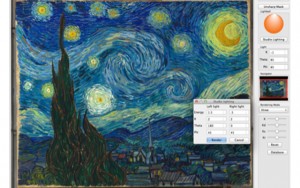 IS&T’s Archiving Conference, 19-22 April 2016
IS&T’s Archiving Conference, 19-22 April 2016
National Archives, Washington DC
Surface and texture information is important for the study of many types of historical material. When combined with image capture, three-dimensional visualization can reveal hidden characteristics, and Archiving 2016 will provide opportunities to learn about two methods, used in museums and galleries.
Four-Light Imaging (4LI) uses polarized light sources to capture information about the microstructure (impasto) of artwork. The full (multi-) spectral nature of the surface reflectance is measured, which allows computer ‘re-lighting’ for different illumination and viewing conditions. Eight images are collected for a given object, and automated software displays diffuse color and surface-normal images.
Prof. Roy Berns, Rochester Institute of Technology, will be offering his Four-Light Imaging short course.
Reflectance Transformation Imaging (RTI) uses up to 50 still images while moving the light source. The resulting data are displayed using interactive software that simulates viewing the object at different angles as you might if holding it. The method has been applied to a range projects, including early photographs at The Smithsonian, Diego Rivera murals in San Francisco and ancient tablets at The Louvre.
Carla Schroer and Mark Mudge, Cultural Heritage Imaging, will be presenting the short course, Computational Photography Techniques for Cultural Heritage Documentation and Archiving.
Spectral Imaging: An additional, short course that complements these is to be presented by Fanella France and Meghan Wilson, Library of Congress, Spectral Imaging – Capture and Processing. In a previous post I described the planned sessions on multi-spectra imaging at the conference.


